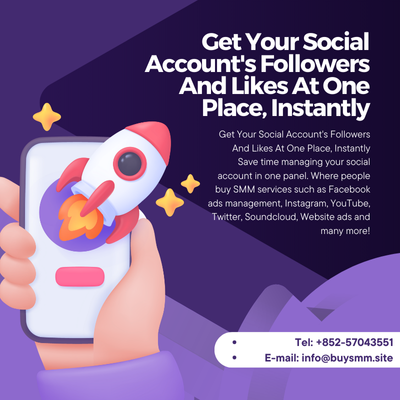Pinterest is one of the most powerful platforms for driving traffic and increasing brand visibility. With over 400 million active users, businesses and influencers alike are eager to grow their presence on the platform. One option that some consider is buying Pinterest followers—but is it really a good idea, or does it come with risks?
Why People Buy Pinterest Followers
The main reason people buy Pinterest followers is to establish credibility and social proof. When a profile has a high follower count, it appears more trustworthy and influential. This can encourage real users to follow and engage with the account, as people tend to be drawn to popular profiles.
Additionally, brands and businesses often look at follower numbers when deciding to collaborate with influencers. A higher follower count can make an account seem more appealing to potential partners. For new accounts that struggle to gain traction, buying followers might seem like a quick way to boost visibility and attract organic engagement.
The Downsides of Buying Pinterest Followers
While buying Pinterest followers might seem beneficial at first, it comes with several major downsides:
1. Fake Followers Don’t Engage
The biggest issue with buying followers is that most of them are bots or inactive accounts. Since Pinterest’s algorithm prioritizes engagement (saves, clicks, and comments) rather than just follower count, having a large number of inactive followers won’t help boost your reach. If your content doesn’t receive engagement, Pinterest won’t recommend it to real users, which defeats the purpose of growing your account.
2. Risk of Account Suspension
Pinterest, like most social media platforms, has strict policies against fake engagement. If Pinterest detects that you have purchased fake followers, your account could be penalized, restricted, or even banned. Losing your account after months or years of effort isn’t worth the short-term boost in followers.
3. Damage to Credibility
If your followers are fake, it’s easy for people to notice. Real users can check engagement levels, and if you have thousands of followers but very few repins or comments, it can damage your reputation. Brands and businesses looking for partnerships will also check engagement metrics, not just follower numbers. If they see an account with a suspiciously high number of followers but low activity, they may avoid working with you.
The Right Way to Grow Pinterest Followers
Instead of buying followers, here are some effective and safe ways to grow your Pinterest account:
1. Create High-Quality Pins
Pinterest is a visual platform, so eye-catching, high-resolution images perform best. Use Canva or Photoshop to design visually appealing pins with engaging text overlays and consistent branding.
2. Optimize Your Profile & Boards
Ensure your profile is complete with a clear bio, profile picture, and relevant keywords. Name your boards strategically and add descriptions with keywords to improve discoverability.
3. Pin Consistently
Pinning regularly (10-20 times a day) keeps your content active. Scheduling tools like Tailwind can help maintain a consistent posting schedule.
4. Use Keywords & SEO
Pinterest functions like a search engine. Including relevant keywords in pin descriptions, board titles, and alt text improves your chances of appearing in search results.
5. Join Group Boards & Tailwind Communities
Engaging with group boards can help you reach a larger audience. Similarly, Tailwind Communities allow you to share content with like-minded creators who can help boost your reach.
6. Engage With Others
Follow relevant accounts, repin valuable content, and comment on posts to increase your visibility within the Pinterest community. The more you engage, the more likely users are to notice and follow you.
7. Promote Your Pins
Pinterest ads can help drive traffic and engagement from real users. While this requires a budget, it is far more effective than buying followers.
Final Verdict: Is Buying Pinterest Followers Worth It?
No, buying Pinterest followers is not a good strategy for long-term success. Fake followers don’t engage with your content, can lead to account penalties, and may harm your credibility. Instead, focus on organic growth strategies like creating high-quality content, optimizing for SEO, and engaging with your audience.
Building a real, engaged Pinterest following takes time, but it leads to sustainable growth and better opportunities in the long run.






